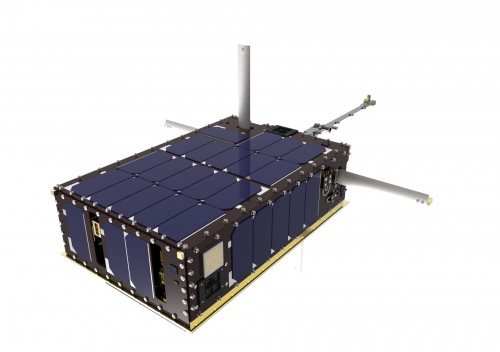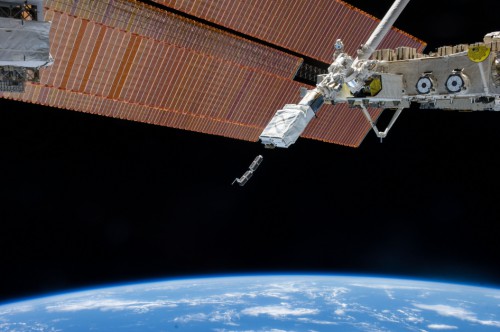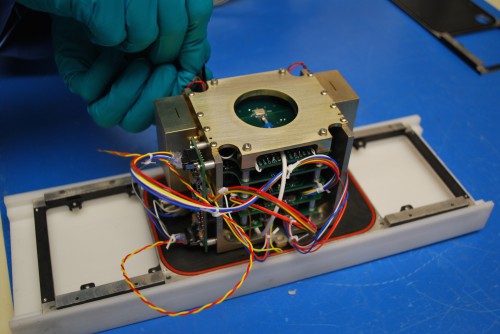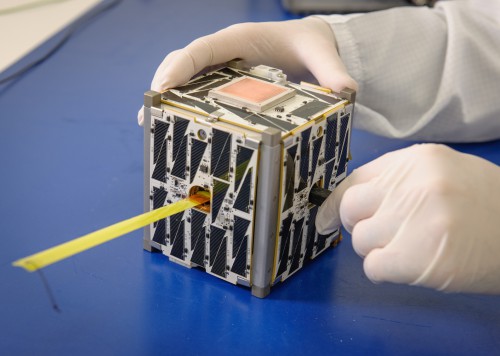
An advanced new six-unit (6U) CubeSat is being designed by a NASA skunkworks team, for possible deployment from the International Space Station by January 2016. The CubeSat, named Dellingr after the god of the dawn in Norse mythology, will be developed and tested over the next year under a self-imposed deadline. The CubeSat will be able to accommodate agency-class science investigations and technology demonstrations at a lower cost than normal.
The development team is comprised of engineers and scientists from NASA’s Goddard Space Flight Center in Greenbelt, Md. Environmental testing is expected to begin in December; after testing is completed, the CubeSat will then be delivered to NASA’s Kennedy Space Centre in Florida, where it will be readied for launch to the International Space Station, possibly as early as January 2016.

“Rapid advances in the performance and efficiency of miniaturized systems are enabling a future only limited by vision and imagination,”according to Michael Johnson, chief technologist of Goddard’s Applied Engineering and Technology Directorate. “CubeSats are a part of that future.”
Carrying three heliophysics-related payloads, Dellingr doubles the payload capability of the previous three-unit (3U) CubeSat pioneered by the California Polytechnic Institute in 1999, which was designed primarily for the university community. One of those payloads, the miniaturized ion/neutral mass spectrometer, will be tested for the first time aboard the National Science Foundation’s ExoCube mission, which will measure the densities of all significant neutral and ionized atom species in the ionosphere. ExoCube will be launching in January 2015 as part of the CubeSat Launch Initiative on the ELaNa X mission.
The need for a new CubeSat system is great, according to Johnson. “We need a potentially disruptive technology that gives us a way to dramatically change the way we do science.” He added: “We need more cost-effective approaches to achieve compelling Earth and space science. A 6U capability provides one way to accomplish the goal.”

The smaller, newer CubeSat, measuring about 12 inches long, nearly 8 inches wide, and 4 inches high, will be able to be designed, tested, and delivered at a fraction of the cost of more traditional satellite missions. This is made possible by using low-cost, commercial, off-the-shelf parts. After being deployed to a high-inclination orbit by a re-supply craft heading to the International Space Station, Dellingr’s mission could last up to six months.
Such CubeSats have become popular and appealing to government researchers due to their lower costs and flexible configurations, unlike larger traditional satellites. Various missions can now consist of multiple CubeSats being launched at once instead of being limited to a single satellite. NASA, as well as other government agencies, now invest regularly in CubeSat technologies. CubeSats are also ideal for prototype technologies; they can demonstrate the technology involved, in the space environment, at greatly reduced costs.

There are, however, some drawbacks as well. 3U CubeSats “don’t always offer our scientists the payload volume they require for their missions,” noted Johnson. There are more constraints on volume and power, according to Chuck Clagett, Dellingr project manager. Also, studies of previous CubeSats have suggested that they can fail up to 40 percent of the time. The skunkworks team wants to improve that by doubling the platform’s girth, increasing its power capacity, and employing novel processes to increase its on-orbit reliability.
“Our goal is to create a platform that is successful more than 90 percent of the time – similar, in fact, to sounding rocket flights,” Clagett added.
The new CubeSat technology being developed could revolutionize the satellite industry. As Luis Santos Soto, Dellingr deputy project manager and engineer at NASA’s Wallops Flight Facility in Virginia, summarized:
“Dellingr is an innovative, fast-track mission that demonstrates our ability to execute reliable, small science-grade missions inexpensively and rapidly. For us, this is a pathfinder. It symbolizes the dawn of a new age for CubeSats at Goddard.”
More information about NASA’s CubeSats is available here.
Want to keep up-to-date with all things space? Be sure to “Like” AmericaSpace on Facebook and follow us on Twitter: @AmericaSpace



